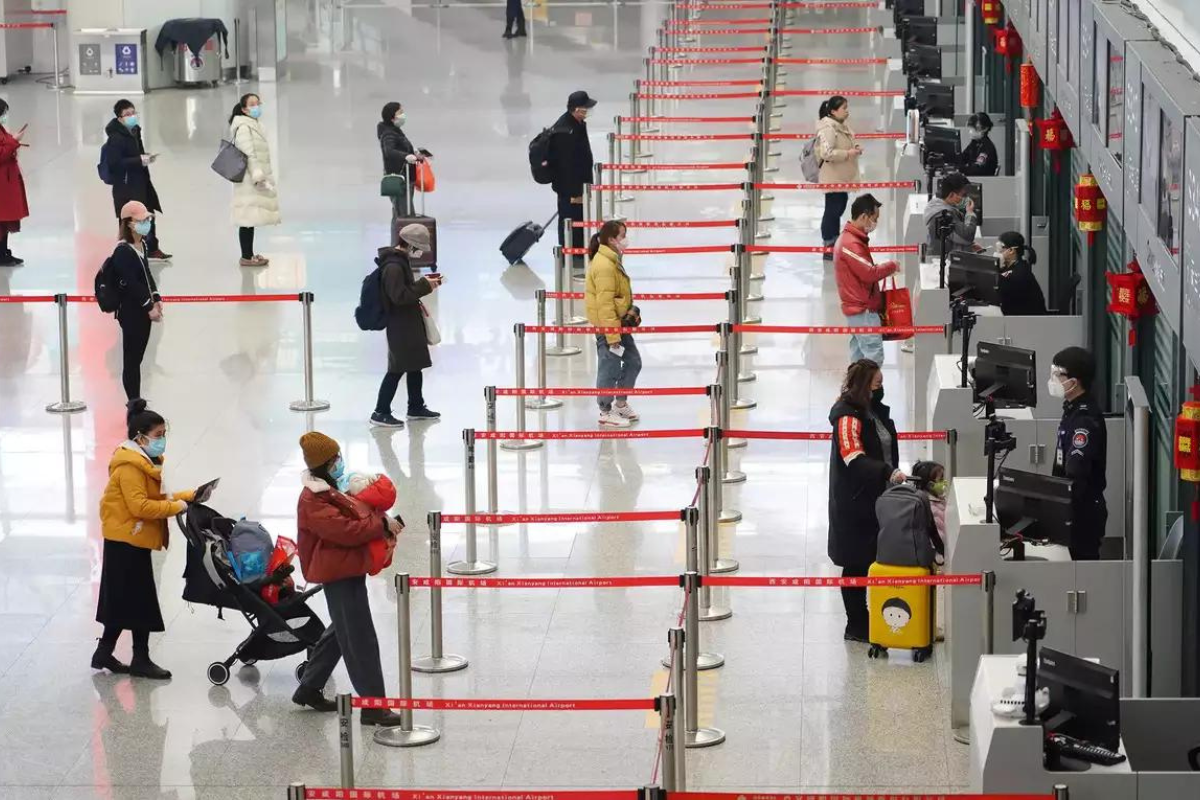The travel industry in Asia is experiencing a phenomenal resurgence in 2024. Buoyed by relaxed travel restrictions and a growing appetite for unique experiences, tourists are flocking back to this vibrant continent. This resurgence is accompanied by a fascinating shift in travel trends, reflecting a new era in Asian tourism.

Photo: India Times
As Asia’s travel industry flourishes, it’s crucial to consider sustainability. Responsible tourism practices are essential to ensure the long-term viability of the industry and the preservation of the continent’s natural and cultural heritage. Tourists are becoming more environmentally conscious, seeking eco-friendly travel options. Destinations that prioritize sustainability and responsible tourism practices are likely to attract a growing segment of environmentally aware travelers.
The whispers have become a roar. Asia’s travel scene is experiencing a phenomenal resurgence in 2024. Tourists, both local and international, are flocking back to the continent, eager to explore its vibrant cultures, breathtaking landscapes, and unique experiences. But this return isn’t a simple rehash of pre-pandemic trends. New preferences and priorities are shaping the future of Asian travel, making it more exciting and dynamic than ever before.
Visa-free freedom fuels the Asian tourism boom
Simplifying travel, and visa-free policies are transforming how we explore Asia. Gone are the days of lengthy visa applications, replaced by the ease of spontaneous regional adventures. This newfound freedom strengthens regional tourism and economic ties.
The rise of Asia’s middle class, with their growing disposable income and wanderlust, perfectly aligns with this trend. Countries like Thailand have seen a surge in Chinese tourists after relaxing visa requirements. This trend is expected to continue as more Asian nations embrace visa-free travel, catering to the region’s growing desire to explore.

Photo: Greelane
Looking beyond bilateral agreements, regional blocs like ASEAN are exploring the possibility of visa-free zones encompassing multiple countries. Imagine a single visa for a multi-country Southeast Asian adventure! Such initiatives would significantly boost regional tourism and position Asia as a unified travel destination.
Visa-free travel signifies a brighter future for Asian tourism. It fosters regional integration, cultural exchange, and economic growth. As more countries embrace this approach, Asia is poised to become a seamless travel zone, brimming with diverse experiences waiting to be discovered.
Festival tourism: Blending culture and adventure
Gone are the days of simply ticking off landmarks on a travel itinerary. Today’s travelers crave immersive experiences that connect them to the heart of a destination. This yearning has fueled the rise of festival tourism, where journeys are meticulously planned around major cultural celebrations.
Imagine witnessing the inauguration ceremony of the Ram temple in Ayodhya, India, a once-in-a-lifetime experience steeped in religious significance. Or, picture yourself amidst the vibrant energy of a concert featuring global artists in Singapore, a fusion of international talent and local flair. These are just a few examples of how festival tourism allows travelers to delve into the soul of a place.

Photo: Woman And Home
Festivals offer a unique window into a destination’s traditions, customs, and beliefs. By participating in these vibrant celebrations, travelers gain a deeper understanding of the local culture. Witnessing traditional dances, savoring regional delicacies, and interacting with enthusiastic locals creates a deeper connection to the place you visit. These experiences go beyond the fleeting snapshots of a typical sightseeing trip, leaving behind a lasting impression and unforgettable memories.
Festival tourism is about adventure. Imagine the thrill of navigating through a bustling crowd at a carnival in Rio de Janeiro or the adrenaline rush of participating in a traditional water fight festival in Thailand. These celebrations offer a chance to step outside your comfort zone and embrace the spirit of the occasion.
The cashless revolution: A smoother journey for Asian travelers
The way tourists manage their finances in Asia is undergoing a dramatic shift. Cash is taking a backseat, replaced by the convenience and security of cashless payment methods. Research shows a significant decline in cash use across the region, with tourists embracing credit cards and mobile wallets. This trend is fueled by the growing acceptance of digital payments throughout Asia. Major events like World Expo 2025 in Osaka, Japan, are setting a cashless precedent, further accelerating this shift.
The benefits of going cashless are numerous. Convenience is paramount. Tourists can ditch the hassle of carrying large amounts of cash or navigating complex currency exchange procedures. A simple tap or swipe completes transactions, making purchases a breeze. Security is another advantage. Digital payments offer better protection against loss or theft compared to cash. Additionally, cashless transactions leave a digital trail, aiding authorities in case of fraudulent activity.
Perhaps the most significant advantage is the elimination of currency exchange woes. Tourists no longer need to worry about exchange rates or hidden fees. Cashless transactions occur seamlessly, regardless of the local currency, removing a layer of stress from the travel experience.
This shift towards a cashless future promises a smoother and more enjoyable journey for tourists exploring Asia. From bustling cityscapes to remote villages, the convenience and security of cashless payments empower tourists to focus on creating lasting memories, not financial anxieties.

Photo: IBS Intelligence
These trends are not isolated phenomena. They are interconnected and mutually reinforcing. Visa-free travel makes it easier for tourists to visit Asia, while the rise of cashless transactions facilitates their spending. The desire for experiential travel creates a demand for unique offerings that cater to this growing segment. This positive feedback loop is contributing to a booming tourism industry across Asia, creating jobs, boosting local economies, and fostering cultural exchange.
The travel landscape in Asia is undergoing a dynamic transformation. With relaxed visa restrictions, a focus on cultural experiences, a shift towards cashless transactions, and a growing emphasis on enriching experiences, Asia is poised to become a leading travel destination in 2024 and beyond. By embracing these trends and prioritizing sustainability, Asian countries can ensure a vibrant and responsible tourism industry that benefits both travelers and local communities.

